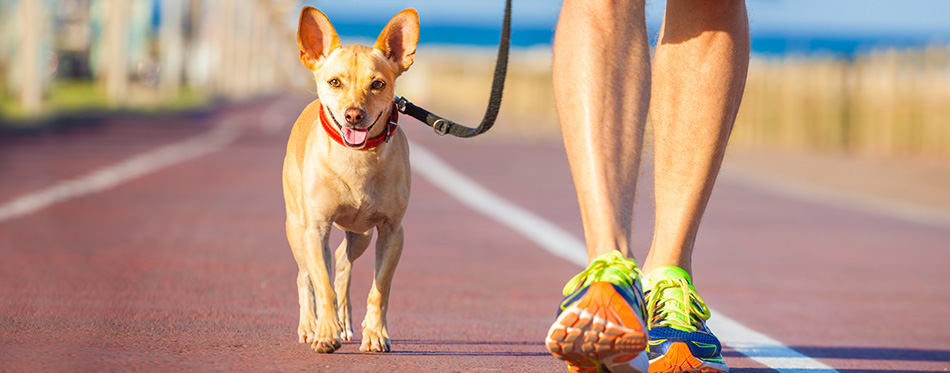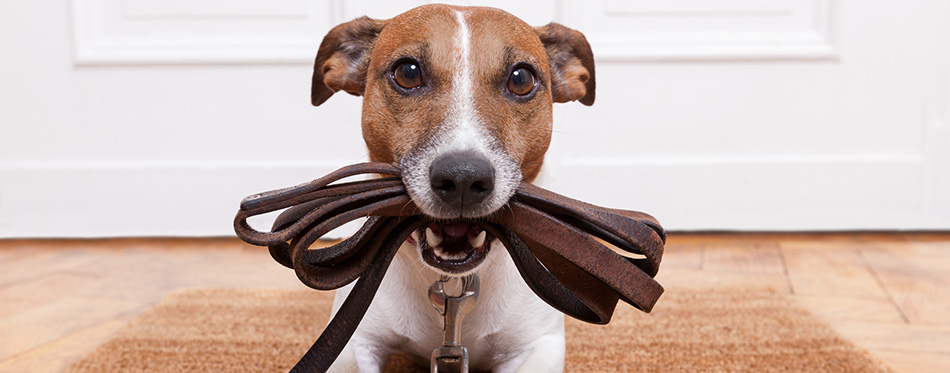Walking our dog is the easiest, most practical, and simplest way we can ever do to help them stay fit, healthy, and happy. When done correctly, it’s also a great way to socialize them with other people and pets at the same time giving them the chance to explore the bigger world outside our homes. To make the most out of every walk, here are 8 tips you can follow:

Walk with Confidence
One of the easiest things to overlook when walking a dog is the pet parent’s confidence. We have always advocated for the use of the pack leader attitude whether it is in exercises, training, or even socialization. The point here is that you don’t want your dog to get any idea that it is in charge of the walk. You are, so act like one. You’ve got to exude confidence every time you bring your dog for a walk. What you need to keep in mind is that you are taking your dog to go with you; not the other way around. As such, keep those shoulders squarely towards your back and maintain that head-up attitude.
Walking with confidence is all about radiating positive energy around you. Your dog senses this positive energy and will feel confident about the walk itself. It gives your dog the sense of security that you will take care of it whenever you’re going for a walk.
Mind Your Pace
It is true that you can walk at a leisurely pace. However, this will also give your dog the chance to stop and pull you to one side simply because its nose has detected something that it needs to investigate. Mind you, within the nose of our dogs are more than 220 million cells that are always looking for even the faintest scent to zero-in on. This can be further amplified if you have a scenthound with you.
Walking at a brisk pace is crucial to getting your dog to stay focused on the walk itself. It will not have time or the chance to look around or to take due notice of that scent that has been bugging it from a few yards away. You cannot avoid these distractions since they are ever-present outdoors. The only thing you can do is to provide a more important distraction for your pet. This is walking.
Don’t Reinforce Bad Behavior
Have you ever found yourself pulling on your dog or even giving it that classic ‘shush’ sound every time it pulls or tugs on its leash? Did it work? Did your dog really stop pulling? Instead of reacting this way, a much better action is to stop walking and tighten their leash, but don’t pull. The message that you are trying to convey here is that you are in control. And if your dog wants to continue with the walk, then it must listen to you and stay at your heel. It also learns that pulling on the leash will not make it get what it wants.
If your dog pulls on the leash and you pull back while still walking, it is being taught that it is okay to pull. Why? Well, you’re still walking and chances are, with a few more tugs on the leash, it will eventually get what it wants. This only reinforces the very same behavior that you don’t want your dog to do. So, if your dog does something that you consider to be undesirable, stop walking and let it return to a calm state. Once your dog is already calm, then you can resume the walk. Resist the temptation to scold or yell at it, too. Those reactions still give it attention, thus reinforcing the behavior.

Document Your Walk
In case you haven’t noticed, many adventurers and athletes today video document their activities not only to have lasting memories of their adventures but more as opportunities for learning. You don’t need an expensive or a high-tech camera to do this. Your smartphone already comes with a great shooter and a smorgasbord of video editing apps on mobile platforms you can use to shoot and play videos.
The idea is to let someone take a video of you while walking your dog in as natural a setting and circumstance as possible. You’ll then watch this right at home so you will have an idea of how well you are walking your dog. This way you can check if your posture shows confidence or if your pace is brisk enough. You will also see some of your reactions to your dog’s behavior that you may not otherwise think of if the video isn’t played over and over. What’s more, you can ask a dog trainer or a behaviorist to watch the video and give you some pointers on which aspects of the dog walking you can still improve on.
Be Mindful of the Length and Tension of the Leash
Some pet parents prefer a retractable dog leash to allow their pets to have a greater degree of freedom. While such a leash may be suitable in certain situations, they are not ideal when your main goal is to walk your dog. Shorter leashes allow for better control of your dog’s movements or actions. It tells them that they are walking with you simply because you allowed them to. As such, they have to obey ‘your’ rules.
Be mindful also of the tension on the dog leash. It should never be pulled tight. While you would want your dog to stay at your heel at all times, you’re also not supposed to tighten the leash such that your pet will feel as if there’s a noose around its neck rather than a collar. Just relax. Be confident as you walk. In instances when you have to correct your dog’s tendency to pull, tighten the leash then let it loose again. If you keep it tensed, then your dog will think that it needs to pull on the leash.
Choose Where to Attach the Leash
If your dog has the tendency to tug or pull on its leash, choose a collar with the leash attachment located at the front. Front-clipped collars and harnesses don’t prevent your dog from pulling, but they can deter them from ever doing so again. The thing is that if the leash is clipped onto the front of the dog’s body, if it does try to tug on its leash it will turn or pivot its body. This turns its head in the opposite direction of where it wants to go.
It’s one of the simplest ways to discourage pulling in dogs when walking. And while a front-clipped harness works best in such situations, training your hound to walk with confidence without ever pulling can be a much better, longer-term solution. You may also like our articles on dog harnesses, dog collars and puppy harnesses.
Let Your Dog Explore
We did say to quicken your pace whenever you’re walking your dog to help minimize distractions and the tendency of dogs to pull. However, we did not say that you have to walk nonstop from the moment you step out of your house until the moment you return. What we did say is that, if done correctly, walking your dog can provide so much more benefits than simply tending to its physical needs.
A critical component of canine health is their social and mental wellbeing. And the only way you can do this is by giving them enough activities that will help challenge or somehow stimulate their mental faculties. That being said, you need to incorporate planned stops for your pet so that it can sniff and explore its beautiful surroundings. We’re not saying you should let your dog stop every 5 seconds or so. What we are saying is for you to plan your walk very well and identify places in your route where you can let your dog explore. For example, if your dog walking route will mean passing by the dog park, then you should bring your dog there so that it can also get acquainted with its fellow dogs and help build its social skills.
Related Post: Dog Cooling Vest

Keep Water Bottles Handy
It doesn’t matter how short or brief the walk, you should always bring water for your dog to drink. While bringing a water bottle can indeed be cumbersome for a number of pet parents, there are now fully collapsible water bottles that are not really that too heavy or bulky. For more options head over to our guide on dog water bottles.
Keeping your dog hydrated is very important especially if you’re going to take it out for a walk in the middle of the day. While early morning or late afternoon walks afford a cooler way to exercise your pet, it is still crucial to give it plenty of water. Walking contracts the muscles which can overheat if not managed correctly. A bottle of fresh, clean water should always be on the ready.
Walking your dog is always a great opportunity to bond with your pet. More importantly, it’s a great way to teach it some of the things you want it to do while also helping it to become happy and healthy.

